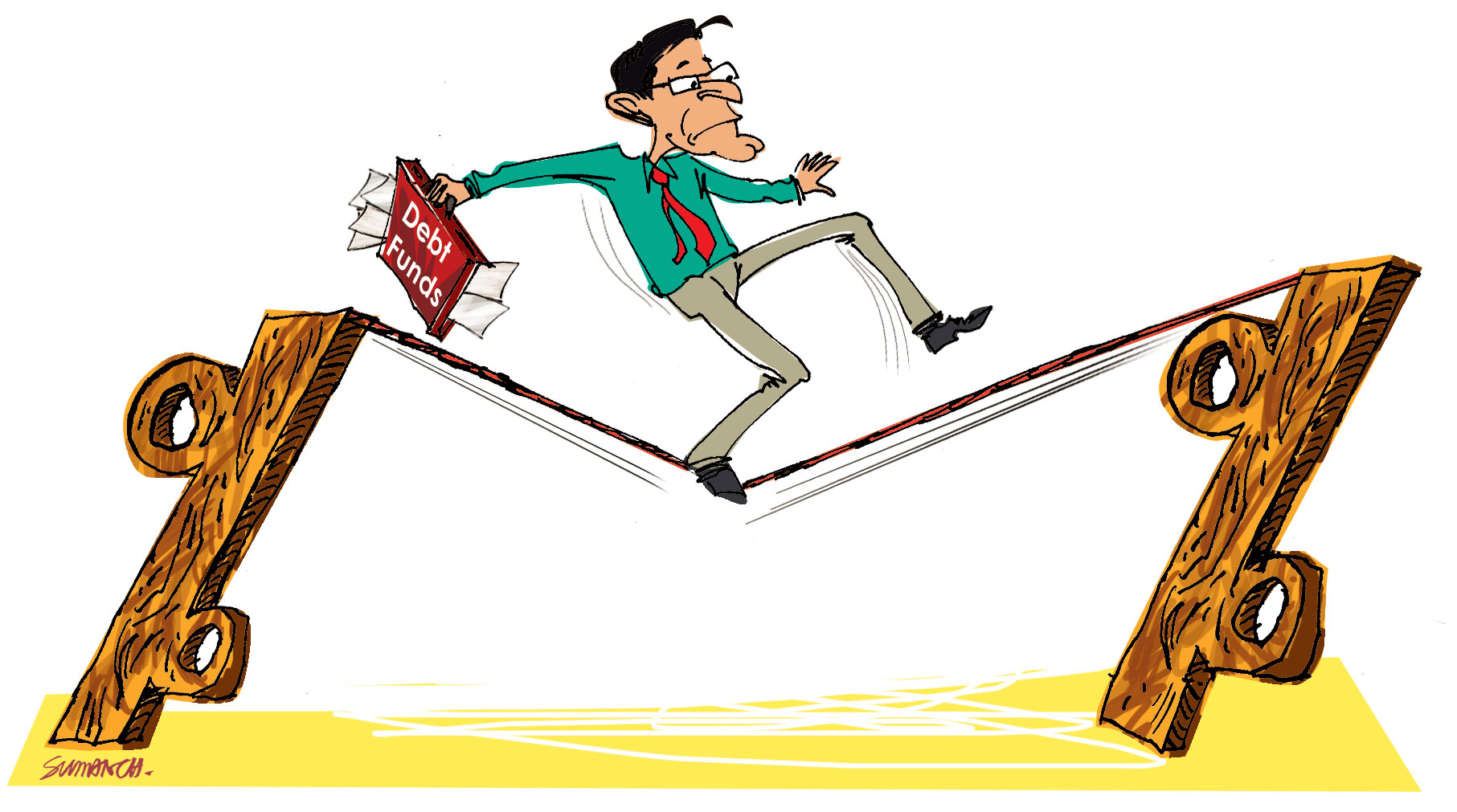Debt, and not equity, could well be “the author of all your pain”, to quote the steely villain of James Bond film Spectre. For the investor, this is the time to be cautious about debt funds, faced as it is by several key impediments, the biggest being credit risks.
As recent developments indicate — the still-unfolding story of IL&FS can be cited as a prime example — quality of credit has come to occupy the centrestage at this juncture.
Interest rate risks, the other major issue that investors should be aware of, is also perceived as a critical threat for the debt market, especially in a scenario marked by frequent rate changes.
Yet, in comparison, credit quality has turned out to be a throbbing, pulsating and more bothering source of risk for the market.
The debt market is all about securities offered by a set of issuers (among them is the government, the giant among midgets), which are subscribed to by investors. There is a secondary market, marked by buying and selling. Market forces are guided inter alia by external factors, which determine the valuations.
This is a regular market for sundry instruments — treasury bills, commercial paper, certificate of deposits, bonds, debentures and government securities. Transactions take place, pricelines shift, securities lose or gain in terms of creditworthiness.
There are a few things debt investors should be familiar with when it comes to credit risk. What does it constitute? What impact do credit ratings have? What are the dos and dont’s for investors?
Ratings are a solution
A big default and, consequently, a credit rating downgrade can affect the entire debt market and bring about a lot of negativity. This has been evident in the case of IL&FS. So a rating and changes in it can prove to be investors’ handy tools. However, one must be vigilant and find out whether the ratings are simply under watch or have actually been downgraded. Here’s a quick checklist of the other things that one should be alert about.
Are there any regulatory concerns about the company in question?
Is the asset quality robust enough? A housing finance company, for instance, should clarify that its asset position is strong and explain the nature of NPAs it is faced with.
Have promoters pledged shares or have otherwise availed themselves loan against the shares of the company?
Is the company well-matched with its asset liability numbers. In other words, is there an asset liability mismatch?
Issues for managed debt
Managed debt products offered by professional fund managers to the investing public are a sub-set of their own. These also have a lot of stiff challenges before them. A hefty current account deficit, increasing prices of fossil fuel and a weaker rupee are all very serious issues for debt fund investors.
At the end of the day, professional managers face an uphill task — they must administer investors’ money and help them earn the desired returns. Not many participants, and certainly
not many financial intermediaries, will go in for active debt funds if the returns generated by these products tend to remain on the low side.
Debt funds are relatively stable and less risky compared with their equity counterparts. However, debt funds are likely to produce only pedestrian returns in the immediate term; thus, their chances of riding the popularity charts appear very slim.
Thus, when you choose a debt fund, try to find an answer to a central question: how much risk is your fund manager willing to take? You also need to ascertain whether your fund can mitigate liquidity risk, that is, the risk arising from the inability to sell assets to meet redemption pressure. Your money will be probably safer in a scenario where your fund generates slightly lower returns by taking lower risk.
Dos and dont’s
The ideal portfolio should be characterised by low volatility, high liquidity and only moderate chances of capital erosion. Defaults, nevertheless, can be permanently banned only in the perfect world; in real life, they can be fairly commonplace. So, stick to AAA and select higher-rated securities if you want to play safe. Here’s a small list of points to remember.
Streamline your debt holdings to remain in sync with changing debt market trends. It is relatively easy to align your interest rate risks to your investment horizon. The same does not apply to credit risk. You, the investor, have no control on credit risk.
There can be no compromise on two vital factors: safety and liquidity. To get the best of these, you may need to sacrifice the possibility of securing high returns.
Stick to low-risk products, including liquid funds and other short-term funds, when you are not sure about the market’s direction.
All this may require you to rejig your allocations. Don’t do so without looking at your risk profile. Re-balancing can add to your transaction costs (such as exit loads) as well bring about tax consequences.
Find out whether your fund truly follows the securities regulator’s mandate on fair valuation of securities. This will ensure that its net asset value is more aligned to the actual value of the assets.
Even after all this, if you are not comfortable with managed debt, choose reliable fixed-income options. This way, you will also be in a position to take advantage of rising interest rates.
The writer is director, Wishlist Capital Advisors










